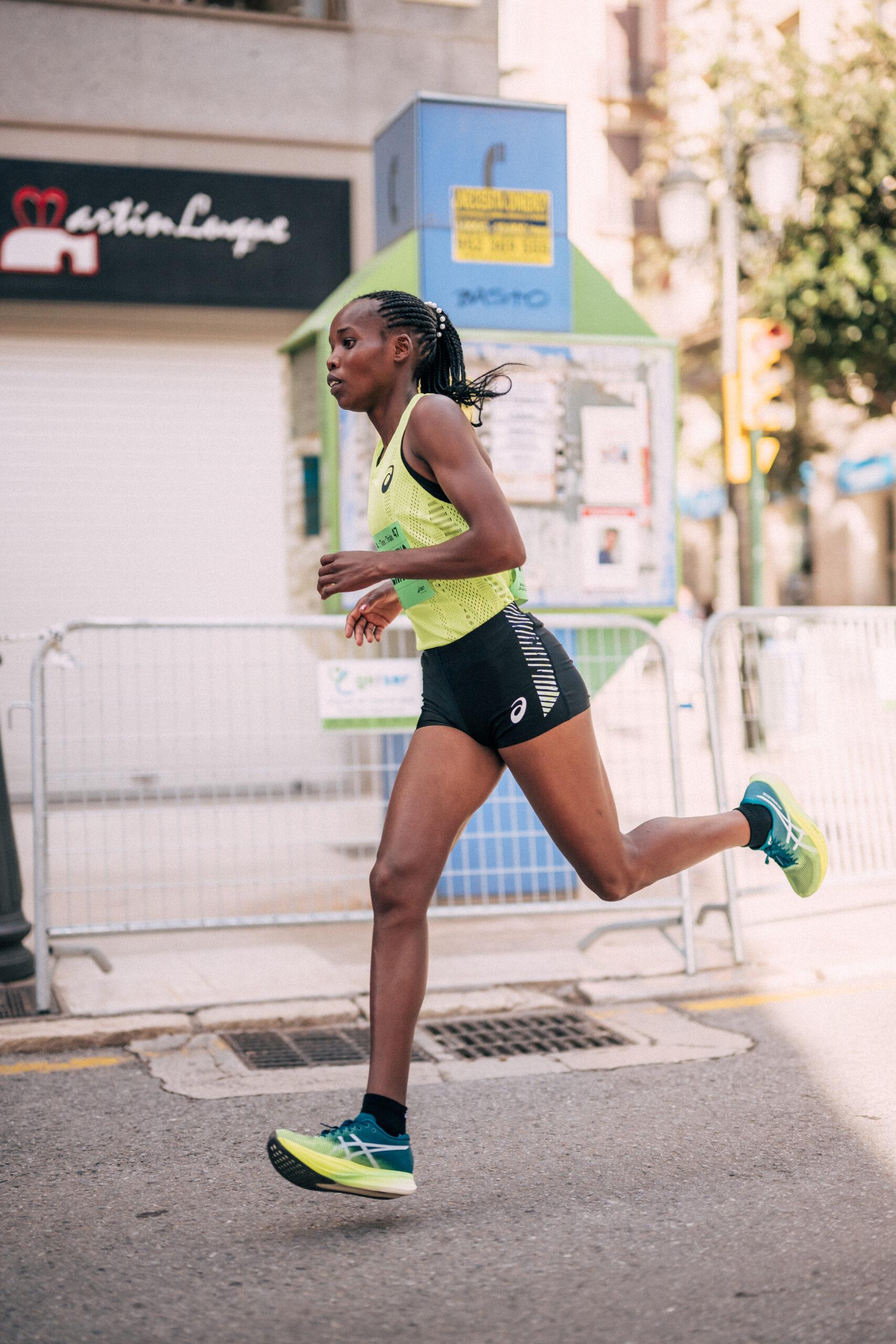
By Lee Scott
The walk divisions in the half marathon and marathon of events of the Toronto Waterfront International Marathon exist to honour the effort of participants who choose to train and compete using a walking gait for the entire distance of the course.
Here are some things to know and tips for training.
Things to know for walkers: you must walk the entire course to be ranked in this division. You must identify yourself on the course as a walker by wearing the back bib and you must start in the designated corral for walk competitors. Walking means keeping one foot must stay on the ground at all times. Because this is not a sanctioned race-walking event, there are no judges on the course, and you do not need to abide by the rule of international race walking that requires the landing leg must be straight from heel strike until that leg passes under the hip. Nevertheless, an excessively bending knee of the landing leg is indicative of a jog or run, and you may be moved to the running category at the discretion of the race organizers.
There can be circumstances in which a competitor may assume they are walking but to the casual observer it would be described as running. When the front landing foot lands flat on the ground, rather than in a position with the heel striking and toes pulled up toward the shin, the knee will typically bend. This flat-foot landing and knee bend changes a walk to a slow jog. Race organizers have the right to move a competitor to the run category if this type of gait is confirmed.
Things to know for runners:
The competitors who have walker bibs on their backs are walking the exact course that you are running. Many have trained in the same way as you with tempo workouts, interval training, and long-distance preparation. Walk competitors have simply chosen to maintain a walking gait throughout their training and on the race course. They started in the last corral, behind all running competitors, so if they are passing you, they have done that from the back of the pack. Give them a shout-out for an amazing pace!
Training tips for walk competitors.
If this is your first long distance competition, respect the distance. You can follow a running training schedule, just walk the workouts. Running will not prepare you to walk a half marathon or marathon. Prioritize and dedicate one day a week for long-distance training. Start with a walk that is the longest walk you have done to date. Add one to two kilometres each week leading up to the race, ideally completing 80-100% of the distance about two to three weeks before race date. These long walks help you gain endurance for the race and to
learn about the hydration, fuel, and electrolyte balance that works best for you over longer distance and time. On race day, the advice given to runners is appropriate for walkers –– stick with what has worked during training!
Short walks that emphasize speed are great workouts that can be done during the week to support your long-distance training day. These would include tempo walks that you conduct at your anticipated race pace, hill repeats (there is a key shallow incline coming into the finish line of both the half marathon and full marathon), speed interval walks that include 30-45 minutes of speed drills that include varying combinations of intensity to active recovery intervals.
For people dedicated to walking the course, revisiting walking technique can help. You don’t need to adopt race walking style, keep it simple with a few key manageable changes that results in measurable improvements to your finish time: look to where you are going, bend arms at the elbows and pump them as you would when running, try shortening stride just enough to eliminate any up and down movement and increase cadence.
Finally, if you are taking longer to complete the course than the official course opening time, move to sidewalks or pedestrian trails for your safety.
Lee Scott has coached thousands of people to walk for fun, fitness, and marathons for more than 25 years. Her most recent book, Step Outside: Walking Your Way to Health and Happiness (Plumleaf Press) is now available in stores.





